- Home
- Quizzes
- My Quiz Activity
- Newsletters
- Sports Betting
- MY FAVORITES
- Add Sports/Teams
- SPORTS
-
NFL
- NFL Home
- Arizona Cardinals
- Atlanta Falcons
- Baltimore Ravens
- Buffalo Bills
- Carolina Panthers
- Chicago Bears
- Cincinnati Bengals
- Cleveland Browns
- Dallas Cowboys
- Denver Broncos
- Detroit Lions
- Green Bay Packers
- Houston Texans
- Indianapolis Colts
- Jacksonville Jaguars
- Kansas City Chiefs
- Las Vegas Raiders
- Los Angeles Chargers
- Los Angeles Rams
- Miami Dolphins
- Minnesota Vikings
- New England Patriots
- New Orleans Saints
- New York Jets
- New York Giants
- Philadelphia Eagles
- Pittsburgh Steelers
- San Francisco 49ers
- Seattle Seahawks
- Tampa Bay Buccaneers
- Tennessee Titans
- Washington Commanders
-
MLB
- MLB Home
- Arizona Diamondbacks
- Atlanta Braves
- Baltimore Orioles
- Boston Red Sox
- Chicago White Sox
- Chicago Cubs
- Cincinnati Reds
- Cleveland Guardians
- Colorado Rockies
- Detroit Tigers
- Houston Astros
- Kansas City Royals
- Los Angeles Angels
- Los Angeles Dodgers
- Miami Marlins
- Milwaukee Brewers
- Minnesota Twins
- New York Yankees
- New York Mets
- Oakland Athletics
- Philadelphia Phillies
- Pittsburgh Pirates
- San Diego Padres
- San Francisco Giants
- Seattle Mariners
- St. Louis Cardinals
- Tampa Bay Rays
- Texas Rangers
- Toronto Blue Jays
- Washington Nationals
-
NBA
- NBA Home
- Atlanta Hawks
- Boston Celtics
- Brooklyn Nets
- Charlotte Hornets
- Chicago Bulls
- Cleveland Cavaliers
- Dallas Mavericks
- Denver Nuggets
- Detroit Pistons
- Golden State Warriors
- Houston Rockets
- Indiana Pacers
- Los Angeles Clippers
- Los Angeles Lakers
- Memphis Grizzlies
- Miami Heat
- Milwaukee Bucks
- Minnesota Timberwolves
- New Orleans Pelicans
- New York Knicks
- Oklahoma City Thunder
- Orlando Magic
- Philadelphia 76ers
- Phoenix Suns
- Portland Trail Blazers
- Sacramento Kings
- San Antonio Spurs
- Toronto Raptors
- Utah Jazz
- Washington Wizards
-
NHL
- NHL Home
- Anaheim Ducks
- Arizona Coyotes
- Boston Bruins
- Buffalo Sabres
- Calgary Flames
- Carolina Hurricanes
- Chicago Blackhawks
- Colorado Avalanche
- Columbus Blue Jackets
- Dallas Stars
- Detroit Red Wings
- Edmonton Oilers
- Florida Panthers
- Los Angeles Kings
- Minnesota Wild
- Montreal Canadiens
- Nashville Predators
- New Jersey Devils
- New York Islanders
- New York Rangers
- Ottawa Senators
- Philadelphia Flyers
- Pittsburgh Penguins
- San Jose Sharks
- Seattle Kraken
- St. Louis Blues
- Tampa Bay Lightning
- Toronto Maple Leafs
- Vancouver Canucks
- Vegas Golden Knights
- Washington Capitals
- Winnipeg Jets
- NCAAF
- NCAAM
- Boxing
- Entertainment
- Lifestyle
- Golf
- MMA
- Soccer
- Tennis
- Wrestling
- More Sports
- RESOURCES
- My Account
- YB on Facebook
- YB on Twitter
- YB on Flipboard
- Contact Us
- Privacy Policy
- Terms of Service
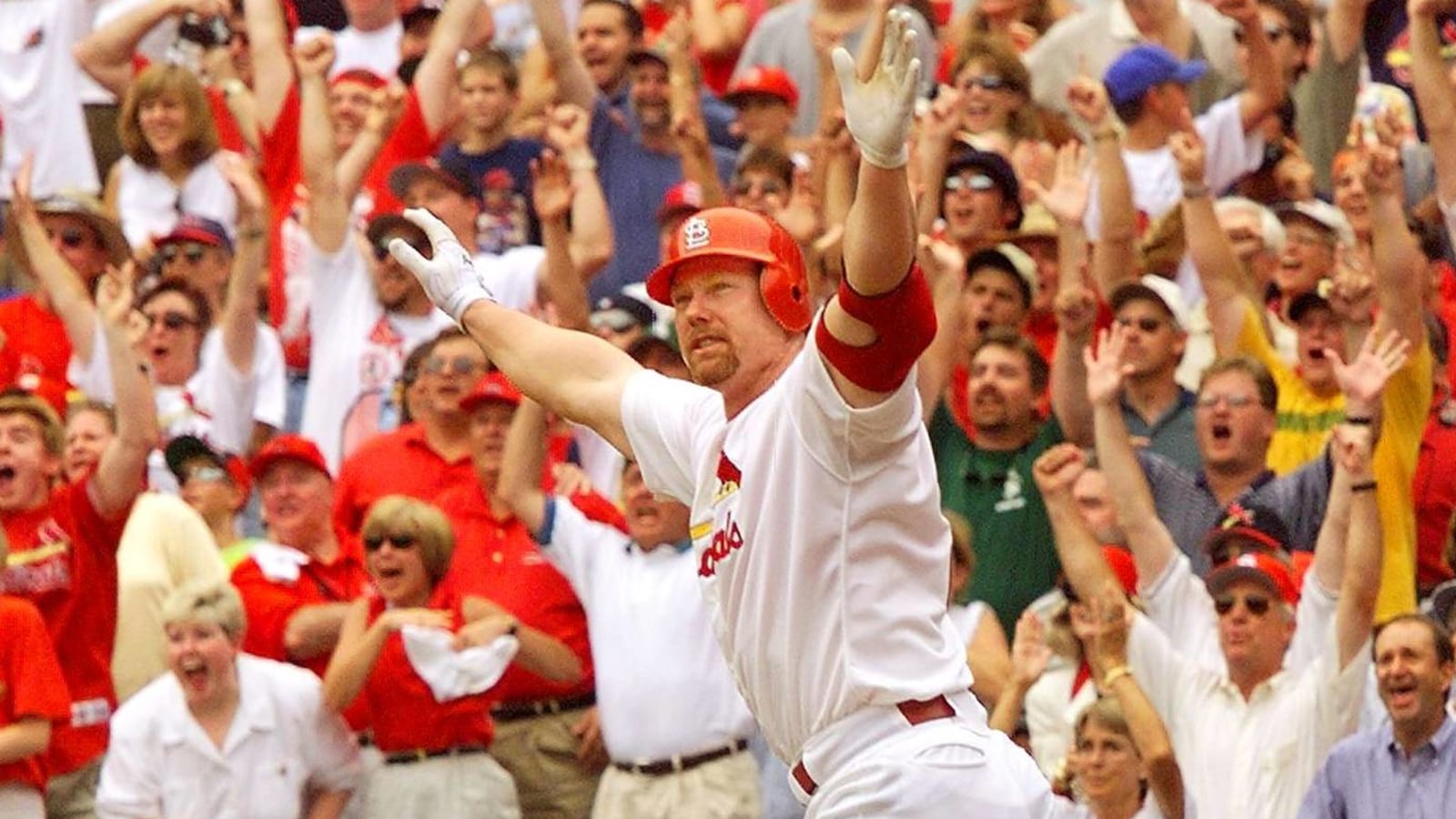
The 30 best second-half performances in MLB history
While early-season performance can garner plenty of All-Star nods, many of the most enduring performances in baseball history come after the Midsummer Classic. The pathways to many records are set in the early going but are secured much later on — when the pennant chase is at its peak intensity. Here is a look at the greatest second-half performances in MLB history, including the mark that many of them stamped on the history of the game.
Carl Hubbell (1933)
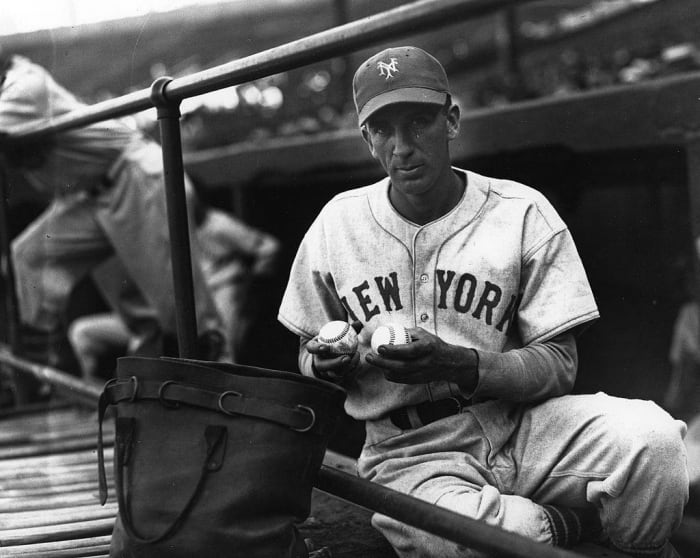
Hubbell had one of the greatest performances of his career in 1933, winning 23 games with a 1.66 ERA, the first of five consecutive seasons in which he would notch 20 victories. Hubbell was the starting pitcher for the National League in the first All-Star game, on July 6, 1933, and took his effort to yet another level following it. In the second half of the year, Hubbell threw four consecutive shutouts while working a 46.1 scoreless inning streak. Hubbell would lead the NL in wins, ERA, innings pitched (308) and shutouts, with 10, and would help the New York Giants to a World Series title.
Dizzy Dean (1934)
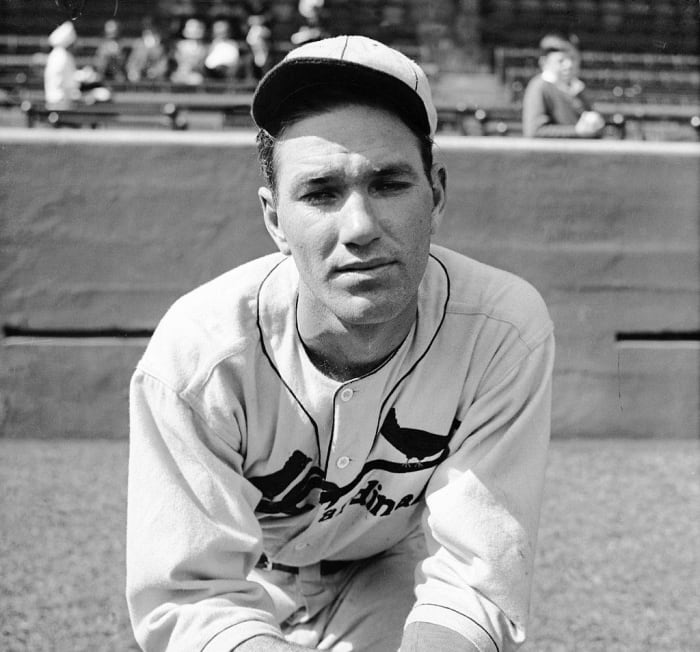
Dean dominated the National League in his fourth season, posting one of the most enduring seasons in MLB history. Dean became the last pitcher to win 30 games during the season, (until 1968 when Denny McLain won 31 for the Tigers) the first of two consecutive years of leading the NL in wins. He went 16-4 in the season’s second half with a 1.79 ERA, throwing 14 complete games in the process. Dean would win the NL Most Valuable Player and win two more games in the postseason, helping the Cardinals to their second World Series title.
Joe DiMaggio (1937)
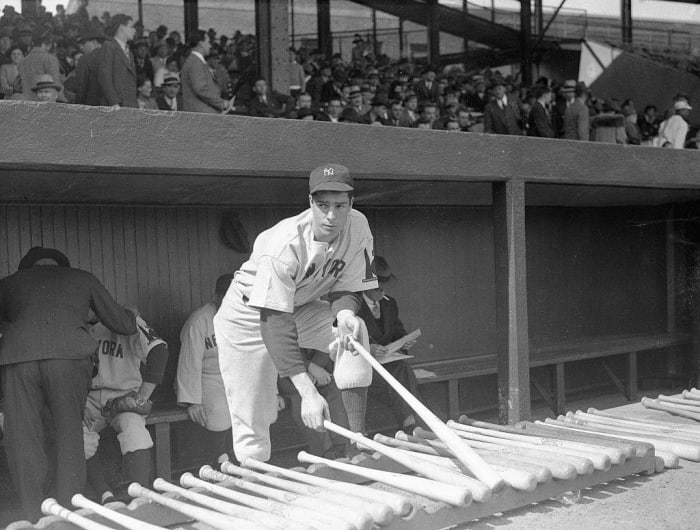
In his second season, DiMaggio put the game on notice that he was truly a force to be reckoned with, putting on an all-around showcase at the plate like few who have been seen since. DiMaggio set a still-standing, second-half record of 248 total bases, built around 22 doubles, 11 triples, 26 home runs and 89 runs scored, while driving in 99 as well. The young Yankee Clipper led the AL with a total of 46 home runs and 151 runs scored, while his 418 total bases stand as the most in history by a player 24 or younger.
Lou Gehrig (1937)

Gehrig’s final dominant campaign came in 1937, when he paired with a youngster named Joe DiMaggio to win another World Series title, the fifth of his career. Gehrig had one of the best post All-Star showings of his career, driving in 108 runs and hitting 24 home runs from July 7 through the end of the season. Overall, the Iron Horse finished with 200 hits for the eighth time in his career and topped 150 RBI for the seventh time.
Hank Greenberg (1937-38)
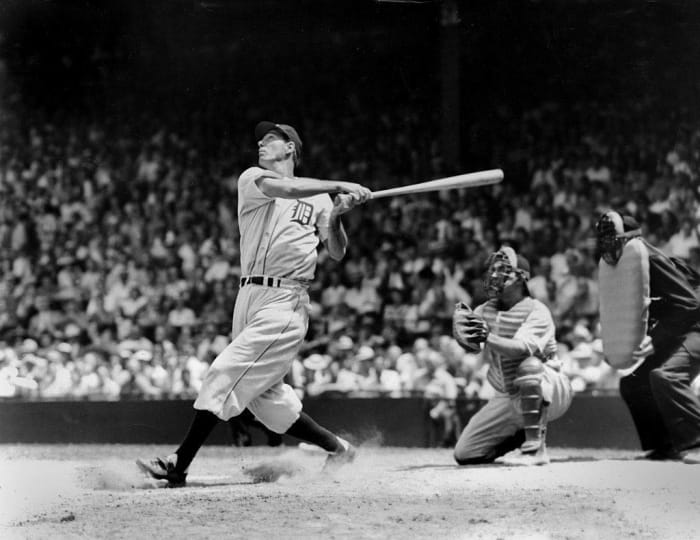
Greenberg strung together a pair of incredible second-half performances in consecutive years, in 1937 and ’38. In ’37, he accumulated 110 RBI following the midpoint of the year, which is still an MLB record, and he set a still-standing American League record of 183. The following season, Greenberg hit 36 second-half home runs amid a year where he would finish with 58, the second-most in history at the time.
Johnny Mize (1938)

Although the "Big Cat" wasn’t selected to the NL All-Star team in his third season after making it as a sophomore, he spent the rest of the year making sure he wasn’t forgotten again. The Cardinals first baseman had 237 total bases, a .389 average, 53 extra base hits and a 1.228 OPS in the second half and finished eighth in MVP voting. Subsequently, he made the All-Star Game the next year…and the next seven seasons he was available as well.
Ted Williams (1941)

In 1941 and at the age of 22, Williams won his first batting title with an emphatic flair that would become synonymous with his career. Williams hit .406 both for the year and in the second half, hitting .415 between July and August, and posted the highest second-half OPS for a 94-year span in the process (1.373). Famously, on the final day of the season, Williams played in both games of a doubleheader with his .400 average at risk. Williams in turn went 6-for-8 for the day and secured his most enduring place in history.
Stan Musial (1949)
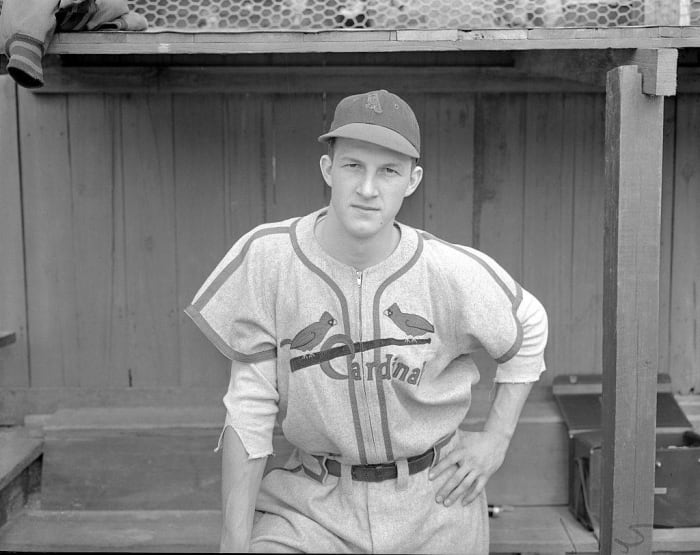
In the summer of ’49, a 28-year-old Musial continued his run as the top hitter in the National League, leading the circuit in hits and doubles for the fifth time in the past six seasons. After getting off to a slow start, Musial kicked into gear by midseason, hitting .383, with 21 home runs and 10 triples in the second half. Amazingly, he did so while striking out only 17 times in 359 plate appearances. Musial’s 9.2 WAR would be the third-highest in the career of the 24-time All-Star.
Robin Roberts (1952)
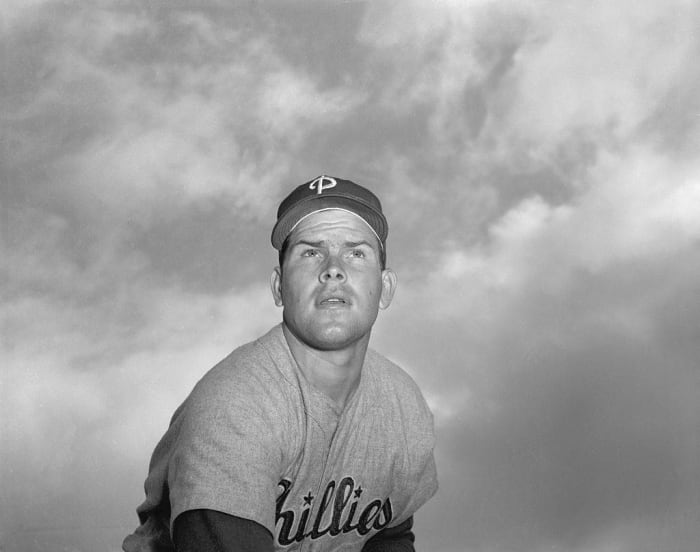
Between 1950 and 1955, Roberts won at least 20 games every season. However, none of those campaigns shined brighter than his 1952 season when the future Hall of Famer became nearly unbeatable down the stretch. Over his final 18 starts, Roberts went 17-1, the most wins in history following the All-Star Game. Overall, Roberts went 28-7 on the year while throwing 30 complete games and 330 innings.
Don Newcombe (1956)

In 1956, Newcombe became the first pitcher in history to win the Most Valuable Player and Cy Young Awards in the same season. He did so on the heels of a dominant second half, in which the Dodger hurler went 16-2 with a 2.64 ERA en route to an MLB-best 27-win season. Newcombe’s effort helped Brooklyn to what would be the third of four World Series appearances in a five-year window between 1952 and 1956.
Richie Ashburn (1958)

Ashburn (seen here with Willie Mays) hit over .300 in eight of his first 11 seasons and .330 or more in five of those eight campaigns. The best stretch of his career came in the second half of 1958 when the Phillies center fielder hit .393 en route to a career-best .350 average. It marked the second season he led the National League in hitting, and he also topped 200 hits for the third time and led the league in triples for a second time in the process.
Dean Chance (1964)

Chance made history in ’64, becoming the youngest pitcher at the time to win the Cy Young Award, at 23 years old. He led the American League in wins (20), ERA (1.65), complete games (15), shutouts (11) and innings pitched (278.1). Chance won 15 of those 20 games between July 11 and Sept. 25, and eight of his 11 shutouts occurred in the second half, including four decided by a 1-0 score.
Sandy Koufax (1965)

Koufax went 11-5 after the All-Star break, striking out 187 batters in 166.2 innings while opponents hit only .159 against him. Of those five losses, three were decided by one run and none by more than three. On Sept. 9, Koufax threw a perfect game against the Chicago Cubs, the fourth no-hitter of his career, a record at the time. What’s most remarkable about this and the following season is the immense pain in his throwing arm that Koufax pitched through, a precursor to the arthritic pain that would end his career following the next season.
Bob Gibson (1968)

Of course, the greatest pitching season of all time was made up of two amazing parts. After going 11-5 with a 1.06 ERA across the first half of the season, Gibson kept his foot on the gas down the stretch. Gibby notched another 11 victories, along with a 1.19 ERA, over 16 second-half starts, including seven of his 13 shutouts on the year. In July, Gibson allowed just three runs over five starts, all of which were complete games. From June 2 to Sept. 2, Gibson worked every inning of his 19 starts.
Tom Seaver (1971)
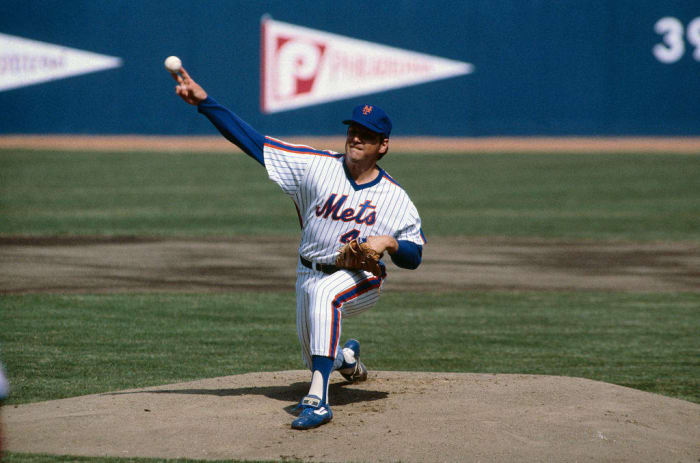
Tom was particularly terrific in the late going of 1971, working to a 1.10 ERA over 16 starts. Seaver finished with a 20-10 record after owning an 11-8 mark on Aug. 1. He worked a complete game in 12 of his final 13 starts, mixing in two shutouts while going the distance and allowing one run in seven other starts. His second-half ERA is the lowest in history for any pitcher who worked over 120 innings following the All-Star Game.
George Brett (1980)

Amid a season in which he mounted the longest run at hitting .400 since Ted Williams did 39 years prior, Brett went on a tear throughout much of the second half. Brett hit .494 in July, the highest July average in history for a batter with at least 85 at-bats. He followed up by hitting .430 in August, the third consecutive month of topping .400. A late-season slump kept him shy of .400 for the year, but his .421 second-half batting average is the second-highest post All-Star total in history.
Rickey Henderson (1983)

Twice in his career Henderson topped 60 stolen bases in the second half, doing so in both 1980 and 1983. However, he did so at an incredibly prolific pace in the summer of ’83, needing only 72 games to swipe 66 bags. Between July and August, Henderson hit .358 while stealing 60 bases and getting caught only eight times. Henderson stole 108 bases in total on the year, the third time in four years he topped the century mark.
Rick Sutcliffe (1984)

Sutcliffe enjoyed one of the greatest midseason resurgences in MLB history following a June trade from the Cleveland Indians to the Chicago Cubs. After working to a 4-5 record with a 5.15 ERA in Cleveland, Sutcliffe went 16-1 with seven complete games after switching leagues. He went 12-0 in the second half, pulled the Cubs into the National League Championship Series and finished 20-6 before being unanimously voted the NL Cy Young Award winner.
Orel Hershiser (1988)

Hershiser made his most enduring impact in the late going of the 1988 season when he broke Don Drysdale’s record for most consecutive scoreless innings. From the final four innings of his Aug. 30 start through his final outing of the year on Sept. 28, Hershiser recorded 59.1 scoreless frames. This included six straight complete game shutouts, including a 10-inning performance to conclude the season on his way to becoming the Cy Young Award winner.
Albert Belle (1998)

In the past 30 years, no player has driven in more second-half runs than Belle’s 86 in 1998, which he did in his second season with the Chicago White Sox. His remarkable late season run also included 31 home runs, 109 hits and a .387 batting average, with Belle setting the White Sox single-season records for home runs (49) and RBI (152) in the process. At the time, his 1.267 second-half OPS was the second-highest in history, surpassed only by Ted Williams’ 1941 effort.
Randy Johnson (1998)

The Big Unit’s brief stop in Houston late in 1998 stands as the greatest in-season hired gun acquisition of all time. The Mariners traded Johnson midway through his final contract year to the Astros, who were in the thick of the National League pennant chase. Johnson dominated his new league upon arrival, going 10-1 over 11 starts, with a 1.28 ERA and 116 strikeouts in 84.1 innings. He finished seventh in NL Cy Young voting despite being in the league for only two months.
Mark McGwire/Sammy Sosa (1998)

The daily escapades of Sosa and McGwire rank high among the most watched spectacles in MLB history. The two sluggers traded off bombs nightly in pursuit of breaking Roger Maris’ record of 61 home runs. McGwire broke the record first, on Sept. 8 against Sosa and the Cubs, before eventually finishing with 70 long balls on the year, while Sosa finished with 66. Both had incredible second halves, with both hitting 33 home runs. While McGwire captured the record, it was Sosa who emerged as NL MVP.
Pedro Martinez (1999)

Martinez’ 1999 campaign stands as one of the singularly most dominant efforts of all time. Overall, he went 23-4 with a 2.07 ERA and led the league in 11 different categories. This jaw-dropping brilliance is especially evidenced by how much he took into his own hands in the second half of the season. Martinez averaged 14.3 strikeouts per nine innings, the highest strikeout ratio per start in MLB history for any half of play. Martinez went 8-1 with opponents hitting .192 against him en route to the second of his three Cy Young Award wins.
Barry Bonds (2001)

Bonds’ 2001 effort ranks among the greatest in MLB history, with the Giants slugger setting several full-season, all-time records, including most home runs (73), walks (177) and slugging percentage (.863). Although the trend would hit much higher levels in the years to come, pitchers began to give up on pitching to Bonds in the late going of the season, as he was walked in a quarter of his plate appearances. But when he did get the chance to make contact, he made it count, with 34 of his 77 hits in the second half clearing the fence. Overall, he had a .547 on-base percentage, the third-highest post-All-Star figure in the category all time.
Eric Gagne (2003)

Gagne’s historically dominant run in the Dodger bullpen continued in 2003, as he became one of the few relievers in history to capture a Cy Young Award. This came on the heels of a wipeout second half, in which Gagne allowed just one run across 38 innings (0.24 ERA) while letting up only 14 hits over 134 batters faced in the second half. Gagne converted all 55 of his save opportunities during the year, which came at the heart of his record 84 consecutive save streak.
Johan Santana (2004)

Santana’s second half in 2004 is easily one of the greatest, if not the greatest, by a starting pitcher in history. He went 13-0 over 15 starts, with the Twins losing only one of his appearances. Santana went 10 straight starts of allowing four or fewer hits during the half, becoming the first pitcher since 1961 to embark on such a streak. He allowed only 55 hits over 104.1 innings, good for a .154 average against, while allowing only 14 extra base hits. Santana captured all 28 first-place votes in Cy Young Award balloting following the year.
Ichiro Suzuki (2004)

In the summer of 2004, Ichiro conquered George Sisler’s long-standing record for most hits in a season, when the Japanese sensation notched 262 of his own. He did the boatload of his damage later in the season, when he had 143 hits after the All-Star break. In the process, he hit .429 over the final two-and-a-half months of the season, the highest second-half mark in MLB history. The hits spree capped a run of Suzuki compiling the most hits in history during a four-year span, totaling 924 since his debut in 2001.
Ryan Howard (2006)

Fresh off a Rookie of the Year campaign, Howard embarked on one of the greatest sophomore seasons in history in 2006. Howard hit 30 of his MLB-best 58 home runs after the All-Star break, highlighted by 14 in August, a month in which he also hit .348. He raised the stakes further in September, hitting .385 during the season’s final month. As a whole, Howard drove in over 70 runs on each side of the All-Star Game, led the majors with 383 total bases and reached base in over 50 percent of his second-half plate appearances.
Jake Arrieta (2015)

Armed with a power repertoire that he could seemingly move on demand at the last second, Arrieta became the stingiest pitcher in history by the numbers in the second half of 2015. He allowed just nine earned runs over 15 starts and 107.1 innings, which equaled a record-setting 0.75 ERA. Arrieta gave up zero runs across nine of those 15 outings. Opponents' .148 average against Arrieta is the lowest second-half success rate against a pitcher in the last 100 years.
Christian Yelich (2018)

Yelich erupted for the Brewers in the second half of the season, carrying the club up the standings as he climbed the National League leaderboards. Yelich hit .367 with 25 home runs, 67 RBI, 10 stolen bases and a 1.219 OPS following the All-Star break while hitting for the cycle twice. He hit 10 home runs in September, including five in six days during the final week of the season. He won the National League batting title while falling one RBI and two home runs short of winning the league’s first Triple Crown since 1937.
Matt Whitener is St. Louis-based writer, radio host and 12-6 curveball enthusiast. He has been covering Major League Baseball since 2010, and dabbles in WWE, NBA and other odd jobs as well. Follow Matt on Twitter at @CheapSeatFan.
More must-reads:
- Player each MLB team needs to step up in second half
- MLB midseason awards watch
- The 'Active MLB strikeout leaders' quiz
Breaking News
Customize Your Newsletter
 +
+
Get the latest news and rumors, customized to your favorite sports and teams. Emailed daily. Always free!
Use of this website (including any and all parts and
components) constitutes your acceptance of these
Terms of Service and Privacy Policy.

